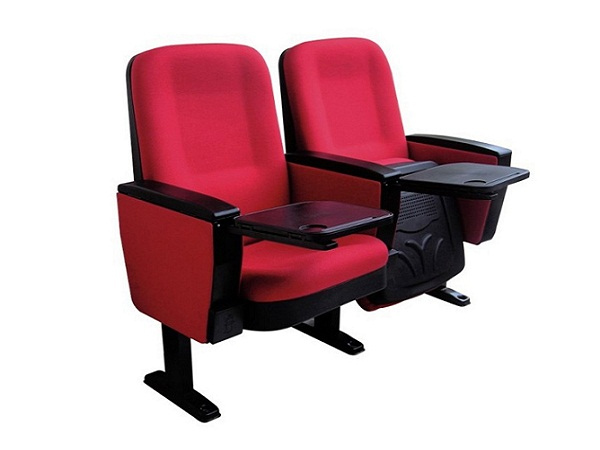What are the rust removal processes for steel and wood desks and chairs?
School desks and chairs have various types and specifications. Steel-wood desks and chairs are commonly used. In order to extend the service life of steel-wood desks and chairs, the steel surface needs to be pickled and phosphated during the production process. This process can make the surface of the steel tabletop smooth and play the role of rust removal and rust prevention. The following steel-wood desk and chair manufacturers will introduce to you the steel-wood desk and chair rust removal process!
Pickling and rust removal process
The method of pickling to remove rust and scale is a more widely used method in the industrial field. Utilize acid to dissolve oxides and mechanically peel off hydrogen generated by corrosion to achieve the purpose of removing rust and scale. The more common ones used in pickling are hydrochloric acid, sulfuric acid, phosphoric acid, and mixed acids. Nitric acid is rarely used because it produces toxic nitrogen dioxide gas during pickling.

1. Hydrochloric acid
Hydrochloric acid pickling is suitable for use at low temperatures, should not exceed 45°C, and use a concentration of 10% to 45%. It is also advisable to add an appropriate amount of acid mist inhibitor.
2. Sulfuric acid
The pickling speed of sulfuric acid at low temperature is very slow, so it should be used at medium temperature, the temperature is 50~-80°C, and the use concentration is 10%~25%.
3. Phosphoric acid
The advantage of phosphoric acid pickling is that it will not produce corrosive residues (more or less there will be some residues after pickling with hydrochloric acid and sulfuric acid), and it is relatively safe. The general use concentration is 10%~40%, and the treatment temperature can be from room temperature to 80°C.
4. Mixed acid
In the pickling process, the use of mixed acids is also a very effective method, such as hydrochloric acid-sulfuric acid mixed acid, phosphoric acid-citric acid mixed acid.
5. Corrosion inhibitor
A proper amount of corrosion inhibitor must be added to the pickling and rust removal and scale removal bath solution. There are many types of corrosion inhibitors, and it is relatively easy to select. Its function is to inhibit metal corrosion and prevent “hydrogen embrittlement”. But when pickling “hydrogen embrittlement” sensitive workpieces, the choice of corrosion inhibitors should be particularly careful, because some corrosion inhibitors inhibit the reaction of two hydrogen atoms into hydrogen molecules, namely: 2[H]→H2↑, so The increase in the concentration of hydrogen atoms on the surface of the metal enhances the tendency of “hydrogen embrittlement”. Therefore, it is necessary to consult the relevant corrosion data manual, or do a “hydrogen embrittlement” test to avoid the use of dangerous corrosion inhibitors.

Anti-rust and phosphating process
The early application of the phosphating process is rust prevention. The steel parts are phosphated to form a layer of phosphating film to prevent rust. The anti-rust period of the phosphate anti-rust treatment work piece can reach several months or even several years (for oil-coated work piece), it is widely used for anti-rust and anti-rust phosphating during the process, transportation, packaging, storage and use. There are three main types of iron-based phosphating, zinc-based phosphating, and manganese-based phosphating:
1. Iron-based phosphating
The main bath composition of iron-based phosphating is ferrous phosphate solution, which does not contain oxidation promoters and has high free acidity. The iron-based phosphating treatment temperature is higher than 95°C, the treatment time is more than 30 minutes, the phosphating film is more than 10g/m2, and it has the dual functions of rust removal and phosphating. This high-temperature iron-based phosphating rate is too slow, so it is rarely used now.
2. Zinc-based phosphating
Zinc-based phosphating is also a widely used anti-rust phosphating, usually nitrate is used as an accelerator, the treatment temperature is 80~90°C, the treatment time is 10~15min, the phosphating film is more than 7.5g/m2, the phosphating film The microstructure is generally a densely packed needle piece.
3. Manganese phosphating
Manganese-based phosphating has better performance for anti-rust and phosphating. The microstructure of the phosphating film is densely packed and is a widely used anti-rust and phosphating. It can be added with or without accelerator. If nitrate or nitroguanidine accelerator is added, the speed of phosphating film formation can be accelerated. Usually the treatment temperature is 80~100°C, the treatment time is 10~20min, and the film weight is above 7.5 g/m2.

Adjust the activation process
The workpiece treated with strong alkali and strong acid will cause the phosphating film to be coarsened, and the surface adjustment activation can refine the crystal grains:
1. Iron-based phosphating generally does not require adjustment of activation treatment.
2. Zinc-based phosphating can be adjusted with oxalic acid and colloidal titanium.
3. Manganese phosphating can be activated with insoluble manganese phosphate suspension.
After phosphating, the chromate sealing of the workpiece can greatly improve the rust resistance. If it is oiled or dyed, the rust resistance can be increased by several or even dozens of times.
The above is the entire content of the rust removal process for steel and wood desks and chairs. In summary, the rust removal process for steel and wood desks and chairs includes pickling and rust removal, rust prevention and phosphating, adjustment and activation, etc. Henan Youte School Equipment Co., Ltd. The steel-wood desks and chairs produced are of excellent quality, advanced technology, and perfect after-sales service. If you have any needs, you can call or leave a message for consultation at any time.


